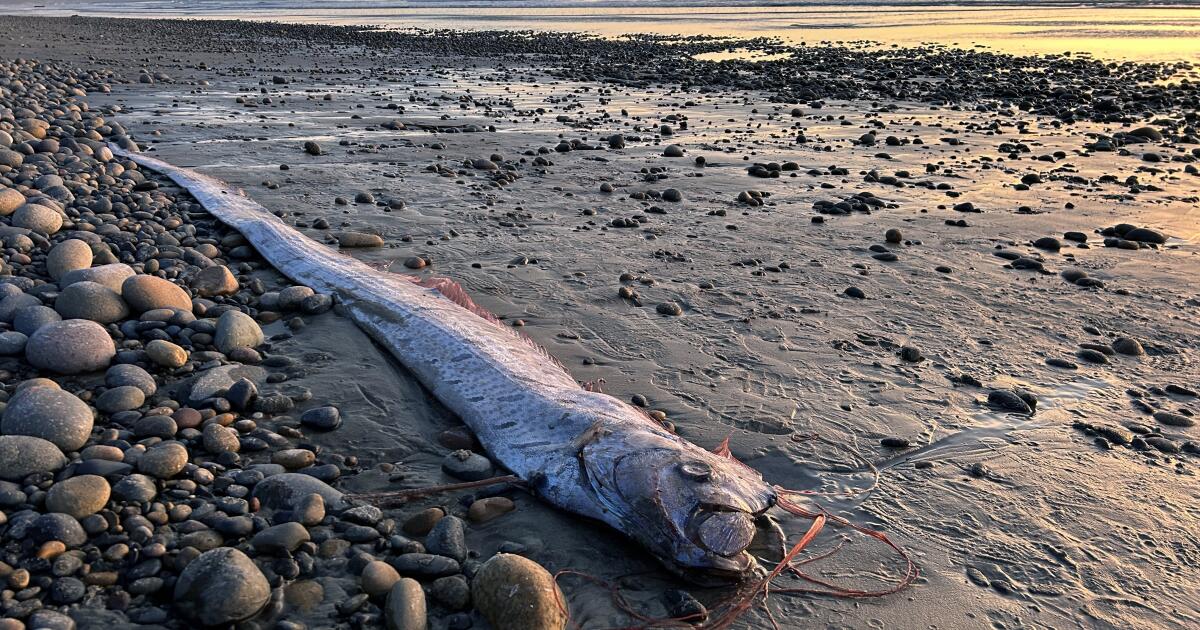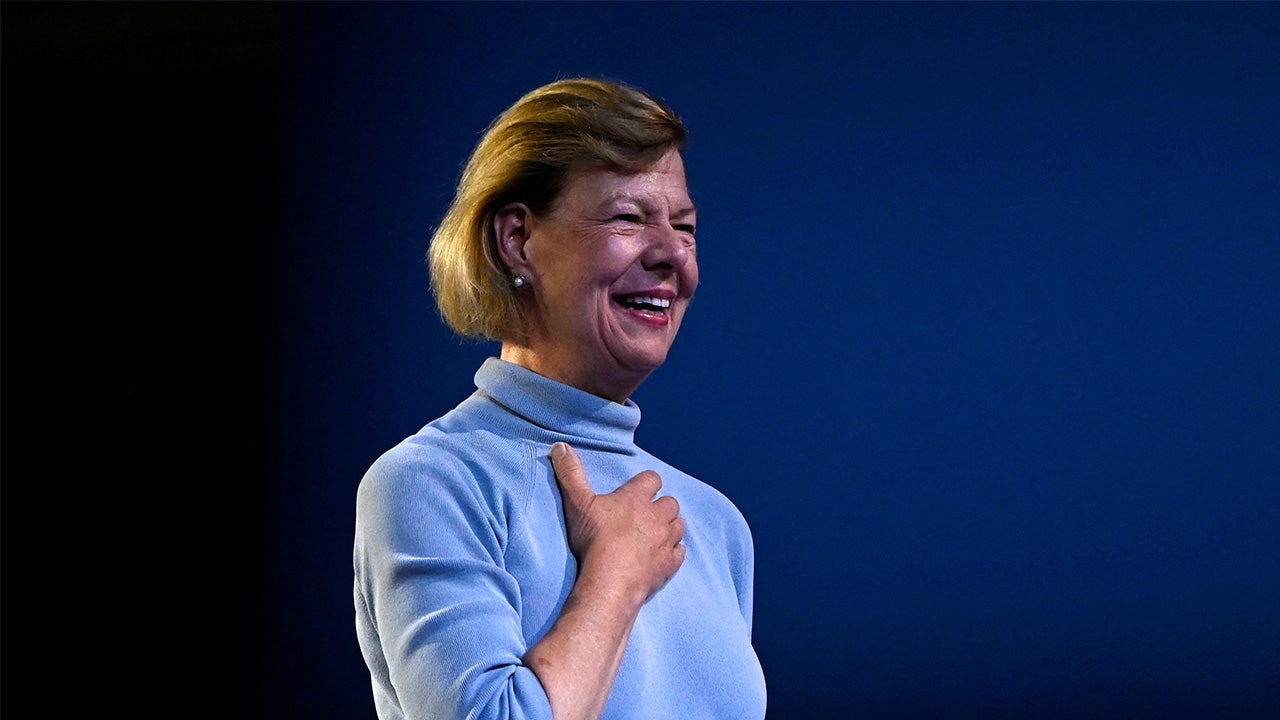Arizona
Heat records toppled like dominoes this year. How do we know which numbers tell the story?
Heat records have been falling like dominoes this year, especially in Arizona. You might even be tired of hearing about it. But as temperatures cool and analysts compile year-end reports, some differing results are worth a review.
In July, Phoenix set a new national record for hottest month in a U.S. city after 31 consecutive days of at least 110 degrees Fahrenheit (starting June 30). Sky Harbor International Airport logged record highs on 12 of those days, with three hitting 119 degrees, and new sweltering lows on 16 July days.
The following month became Phoenix’s second-hottest August after 2020, according to the National Weather Service, with an average daily high of 109.5 degrees. It also marked a new highest average low of 88 degrees, a staggering 4.4-degree increase over August lows recorded between 1991 and 2020.
As of late September, the number of days with temperatures at or above 110 degrees in Phoenix for 2023 had crept to 55, breaking the record of 53 set in 2020. Two new daily temperature records were also set that month, of 110 degrees on the 8th and 113 degrees on the 10th, as reported by the National Oceanic and Atmospheric Administration’s Online Weather Data Daily Almanac.
Another Phoenix heat record toppled in October, which ended as the fourth-warmest for that month globally since 1880 by NASA’s calculations, but the warmest if you ask the European Union’s Earth Observation Programme, owing to differences in how the two agencies evaluate data-sparse regions like the Arctic.
Then, in early November, the nonprofit science education organization Climate Central stacked another domino up, then knocked it over when it defined a new way to measure heat over the course of a year and determined that November 2022 to October 2023 was the Earth’s hottest 12-month streak on record.
But in the same report, the scientists at Climate Central determined that Phoenix only experienced 21 days of extreme heat over the past 12 months and that the longest extreme heat streak was 12 days, starting on July 12, 2023. It also said that, overall, Phoenix did not have an exceptionally warm past 12 months, giving the city a minus 0.1 degree Celsius annual temperature anomaly compared to averages over the past 30 years.
Houston, Baton Rouge, New Orleans, Austin, San Antonio and Dallas all ranked higher on Climate Central’s list of U.S. cities that experienced brutal heat over the past 12 months, with Phoenix coming in at 31st worldwide. That’s even though The Weather Channel, among others, crowned Phoenix as home to the hottest month and various outlets have long hailed it as America’s hottest big city.
You don’t have to be good at math to realize that 55 versus 21 days of extreme heat and a 31-day versus a 12-day heat wave are pretty different answers to seemingly the same question. And you don’t have to track the weekly heat-associated death reports released by Maricopa County, which have already far surpassed last year’s record total of 425 deaths, to know this summer was especially brutal in Arizona.
So, what gives? Why are Climate Central’s conclusions about heat extremes so different from those we’ve been reporting all summer at The Arizona Republic, which are based on intel from government and state agencies, like the Arizona State University Climate Office?
And how, in this age of rising climate stakes and stubborn climate denial, are we to know which numbers to believe, which stats to sweat?
Confusing stats don’t mean confused scientists
The list of ways to measure records to be broken, like the length of a game of dominoes, can go on pretty much as long as one wants to spend lining up new targets to fall. But that doesn’t make real-life heat trends spurious. It also does not mean that “statistics can say whatever you want them to,” as some readers have alleged.
There are right and wrong approaches to conduct analyses of complex climate trends, with statistical tests and checkpoints designed to keep researchers on track along the way. But there are also many valid ways to quantify something like temperature extremes.
An air temperature reading, for example, can vary widely depending on whether it is taken in the sun or the shade, at 9 a.m. or at 3 p.m., in an urban environment or over undeveloped desert and even at four inches versus four feet off the ground. The method that is right is the one that most directly answers the specific question at hand, such as quantifying heat extremes experienced by unhoused people camped out overnight directly on the asphalt versus gauging when to cancel recess on a shaded, grassy playground.
Our investigation into heat and housing: More homes mean more heat. Can new building codes help save metro Phoenix from disaster?
The climate communication game is all about learning to speak the same language and highlighting the most relevant metrics for each region or situation. Meteorologists consider how much jargon is necessary to convey concepts effectively and efficiently. Do desert dwellers need to worry about “wet bulbs” and “heat indexes,” which incorporate measures of humidity, wind speed, sun angle and solar radiation in direct or shaded light? Or can simple thermometer readings tell us what we need to know?
It can be confusing. But that doesn’t mean climate scientists are confused.
In the Climate Central report released earlier this month, Table 3 lists the “longest extreme heat streaks among largest cities” for its analysis period of November 2022 to October 2023. Phoenix is notably absent, despite being larger than every U.S. city listed and having endured summer heat worthy of international headlines.
The table is not wrong, except perhaps for leaving out critical descriptive context in its title. The 10 large cities listed are those that, based on Climate Central’s peer-reviewed methodology, had streaks of high temperatures that deviated most from that region’s baseline normal over the past 30 years. So, it wasn’t the hottest for the longest or even the most “extreme” in terms of impacts or survivability — but the most abnormal given the recorded history of temperature trends.
That’s an important metric for tracking the global influence of climate change. But in a place like Phoenix, temperature anomalies are an insufficient way to communicate heat risks.
Phoenix is in category of its own
These nuances underpinning extreme heat records are why, when the Climate Central report dropped Nov. 9 and was publicized by dozens of news outlets the same week, The Arizona Republic hit pause on coverage of the report — lest their numbers seem to contradict heat stats we’ve been publishing all summer — until a reporter could speak with Climate Central’s scientists about their methods.
“Phoenix really is dealing with these temperatures that push the limits of where humans can survive, and you saw that this summer with people succumbing to the heat. So it’s a little bit of a different category,” Andrew Pershing, lead climate scientist at Climate Central, told The Republic in a conversation about their recent 12-month analysis. “When we think about heat and health, to be able to do this (type of analysis) on a global basis, you do it based on these percentiles or locally-specific thresholds that reflect the temperatures people have gotten accustomed to over a life or over a year.”
In addition to people in Phoenix being more used to heat than in most other U.S. cities, Pershing continued, the shelters and technology commonly available in a place can make a huge difference in determining consequences of “extremes” or “anomalies,” however those terms are defined. So the logic is that, while Phoenix is an outlier in terms of thermometer readings, it is also somewhat buffered from heat impacts by the fact that 98% of its homes have an air conditioning unit installed (though some residents can’t afford to turn it on when it matters most).
More: In a heat wave, some people wait too long to turn on the AC. Smart data use could help
Still, thermometer readings do matter and signal alarming changes afoot.
“One place in the world where the absolutes are so meaningful is a place like Phoenix, because you guys are just so hot,” Pershing said. “Temperatures in Phoenix can become global news because everybody looks at that and says, ‘Wow, that’s really hot.’ Both the scale and the intensity of the impact is really remarkable. So, I think Phoenix has it hard from what climate is giving them but I think the city is doing a lot of really interesting stuff that other places will learn from.”
Hard-knock lessons from Phoenix
One Arizonan offering climate lessons is State Climatologist Erinanne Saffell. Each month, she issues her own report on how recent local measurements stack up against past records via weather and climate webinars she hosts for the public every third Thursday. She also recently reported stats for “Water Year 2023,” the annual timeframe for which runs between October and September, another domino.
Saffell didn’t have time to review the Climate Central report for The Republic, but said their finding that Phoenix did not have an exceptionally hot 2023, and was in fact 0.1 degree Celsius colder than average, makes sense given that “Arizona was exceptionally cold from last November to this June.”
“It has been a very interesting 12 months, most certainly!” Saffell wrote in an email. “The average statewide temperature (between last October and this September) was the 2nd coldest 12 months in the past 30 years.”
History of state climatology: The state climatologist office that almost wasn’t, and what it does for Arizona now
Climate scientists understand that, against the backdrop of overall warming average temperatures, changing concentrations of greenhouse gases in the atmosphere from burning fossil fuels are also causing “global weirding,” or unexpected weather shifts including abnormal cold snaps and extreme winter storms. It’s why communicators ditched the term “global warming” for the more descriptive “climate change.”
July was the month that really set Arizona apart this year, Saffell said, confirming it was the hottest July statewide since records began 129 years ago.
“Reasons why Arizona and the Southwest were so hot in July are tied to an exceptionally strong heat dome over the Southwest,” she wrote. “The Monsoon Ridge that charges our thunderstorms in summer was obliterated by the July heat dome, so lack of cooling thunderstorms also increased the Southwest heat. As El Niño started strengthening, it contributed locally and globally to the summer heat, as did other factors.”
Bearing witness to the signal through the noise
The local, seasonal granularity tracked by experts like Arizona’s state climatologist can be difficult to represent in global analyses of average temperatures. But as more scientist scrutinize climate trends using new dominoes, that they too will fall becomes ever more clear.
Climate Central’s goal for its unusual 12-month analysis was to focus on global anomalies while showcasing its “Climate Shift Index” tool that estimates how likely it is deviations are the result of human-caused climate change. Their selection of the November-through-October timeframe as a new type of domino to stack up was also, according to the report’s introduction, meant to offer fresh calculations ahead of COP28, the annual United Nations Climate Change Conference set to begin Nov. 30 in Dubai.
Climate Central sees value in publishing analyses using peer-reviewed methods directly on their website without subjecting each report to the peer-review process, which can take months or years, Pershing said. They operate outside of academic norms on the philosophy that the world needs timely updates on the global progress of climate change to help facilitate important conversations about climate action.
Efforts like this have sometimes muddied the message for consumers of climate news, as it can be tricky to determine how much weight to give seemingly conflicting information. But as more extreme heat and stronger storms become harder to ignore, that climate communication paradox could resolve itself.
Read our climate series: The latest from Joan Meiners at azcentral, a column on climate change that publishes weekly
The big picture bottom line at this point, Pershing said, is that average temperatures are warming everywhere no matter how you slice the data, and the occurrence of specific heat events can now be increasingly attributed to the emissions released when humans burn fossil fuels for energy.
“We can see that every year the temperatures ticks up and our signal becomes stronger,” he said. “The noise and day-to-day variability is pretty much the same, but that shift becomes bigger every year. Unfortunately, we’re now often adding a hot year on top of another hot year, so it just becomes easier to see that.”
In Phoenix and elsewhere this summer, labeling the heat as extreme didn’t really require advanced tools or record designations. It raises the question of when the need to fine-tune communication about the reality of a changing climate may finally be overtaken by the clarity of its impacts.
Joan Meiners is the climate news and storytelling reporter at The Arizona Republic and azcentral.com. Before becoming a journalist, she completed a doctorate in ecology. Follow Joan on Twitter at @beecycles or email her at joan.meiners@arizonarepublic.com. Read more of her coverage at environment.azcentral.com.
Sign up for AZ Climate, The Republic’s weekly climate and environment newsletter.
Support climate coverage and local journalism by subscribing to azcentral.com at this link.

Arizona
Two Cubs Prospects Earn High Marks for Their Arizona Fall League Performance

The Arizona Fall League gives organizations a chance to see how some of their prospects might look when facing other stars in pipelines around the league, and for the Chicago Cubs who have a loaded farm system, this allowed them to formulate a plan for a group of their minor leaguers.
Things seem to be brewing for the Cubs this winter.
Unlike last year, they have been aggressive in the early portion of the offseason, already making trades to upgrade their bullpen by acquiring Eli Morgan, and giving themselves a solid backup catcher by landing Matt Thaiss from the Los Angeles Angels.
More moves are expected to come for Chicago, specifically regarding their starting rotation.
By adding a reliever and backstop with early trades, that allows them to hold onto some of the money they allocated to potentially get this done in free agency.
However, shipping out more talent is something they might continue to do.
Someone they could potentially look to move coming off his good showing at the Arizona Fall League is Jonathon Long.
When sharing some final thoughts on what occurred at this year’s AFL, Melissa Lockard of The Athletic gave high marks for two Cubs prospects who competed in this event, Long being one of them.
He followed up his strong Double-A season with an eye-catching performance in the Arizona Fall League by slashing 338/.425/.662 with six home runs.
Long could become an outfield option for Chicago down the line, but with other more heralded prospects who play his same position, he could be expendable as the front office searches for ways to improve their Major League roster.
The other player who received high marks shouldn’t surprise anyone.
Moises Ballesteros continues his ascent, following up his breakout performance in 2024 with a .316/.376/.557 slash line, five homers and four doubles in his 19 AFL games.
There was some thought he could be the backup catcher for the Cubs next season based on their need for offensive output at that position, but there are still questions about how he performs on the defensive end that could cause them to use him elsewhere while he continues to develop.
Still, he was impressive with the bat in his hand, prompting Lockard to state he “continues to look like a potential middle-of-the-order fixture.”
Whether it’s at designated hitter or he does become Chicago’s catcher of the future eventually, knowing he has this ability to be an elite offensive producer when he gets the call to The Show should excite the organization and fanbase.
Arizona
Arizona State could push Big 12 title chase to final weekend
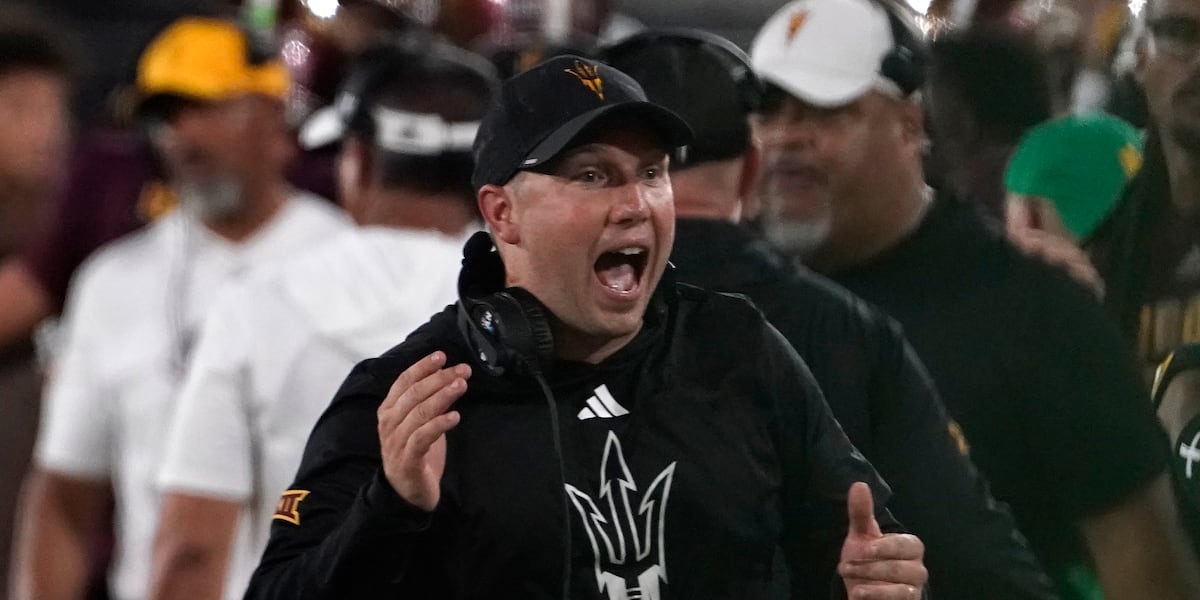
TEMPE, AZ (AP/AZFamily) — The Arizona State Sun Devils are set for a huge matchup this weekend when they host the BYU Cougars at Mountain America Stadium.
Saturday’s game in Tempe will have massive implications in the Big 12 Conference with multiple teams chasing a title game appearance.
A win over the 14th-ranked Cougars would massively boost title game hopes for the 21st-ranked Sun Devils. Ticket prices have been soaring for the highly anticipated conference game.
Arizona State Head Coach Kenny Dillingham joined Good Morning Arizona on Thursday to talk about the team’s expectation-busting season. Watch the full interview in the video player at the top of this page.
Things to watch this week in the Big 12 Conference:
Game of the week
No. 14 BYU (9-1, 6-1 Big 12, No. 14 CFP) at No. 21 Arizona State (8-2, 5-2, No. 21), Saturday, 3:30 p.m. ET (ESPN)
League newcomer Arizona State has a three-game winning streak and BYU is coming off its first loss. The Cougars, after losing at home to Kansas, still control their own destiny in making the Big 12 championship game. They can clinch a spot in that Dec. 7 game as early as Saturday, if they win and instate rival Utah wins at home against No. 22 Iowa State.
Arizona State was picked at the bottom of the 16-team league in the preseason media poll, but already has a five-win improvement in coach Dillingham’s second season.
The undercard
No. 16 Colorado (8-2, 6-1, No. 16 CFP) at Kansas (4-6, 3-4), Saturday, 3:30 p.m. ET (Fox)
Coach Deion Sanders and the Buffaloes are in prime position to make the Big 12 title game in their return to the league after 13 seasons in the Pac-12. If BYU and Utah win, Colorado would be able to claim the other title game spot with a win over Kansas. The Buffs have a four-game winning streak.
The Jayhawks need another November win over a ranked Big 12 contender while trying to get bowl eligible for the third season in a row. Kansas has won consecutive games over Top 25 teams for the first time in school history, knocking off Iowa State before BYU.
Impact players
Iowa State quarterback Rocco Becht has thrown a touchdown in a school-record 14 consecutive games, while receivers Jayden Higgins and Jaylin Noel both have more than 800 yards receiving. San Jose State is the only other FBS team with a pair of 800-yard receivers. Becht has 2,628 yards and 17 touchdowns passing for the Cyclones (8-2, 5-2), who are still in Big 12 contention.
Inside the numbers
Oklahoma State goes into its home finale against Texas Tech with a seven-game losing streak, its longest since a nine-game skid from 1977-78. The only longer winless streak since was an 0-10-1 season in 1991. This is Mike Gundy’s 20th season as head coach, and his longest losing streak before now was five in a row in 2005, his first season and the last time the Cowboys didn’t make a bowl game. … Baylor plays at Houston for the first time since 1995, the final Southwest Conference season. The Cougars won last year in the only meeting since to even the series 14-14-1. … Eight Big 12 teams are bowl eligible. As many as six more teams could reach six wins.
Repeating 1,000
The Big 12 already has four 1,000-yard rushers, including three who did it last season. UCF’s RJ Harvey is the league’s top rusher (1,328 yards) and top scorer with 21 touchdowns (19 rushing/two receiving). The others with consecutive 1,000-yard seasons are Texas Tech career rushing leader Tahj Brooks (1,184 yards) and Kansas State’s DJ Giddens (1,128 yards). Cam Skattebo with league newcomer Arizona State has 1,074 yards.
Devin Neal, the career rushing leader at his hometown university, is 74 yards shy of being the first Kansas player with three 1,000-yard seasons. Cincinnati’s Corey Kiner needs 97 yards to reach 1,000 again.
See a spelling or grammatical error in our story? Please click here to report it.
Do you have a photo or video of a breaking news story? Send it to us here with a brief description.
Copyright 2024 KTVK/KPHO. All rights reserved.
Arizona
What BYU coach Kalani Sitake said about Arizona State game
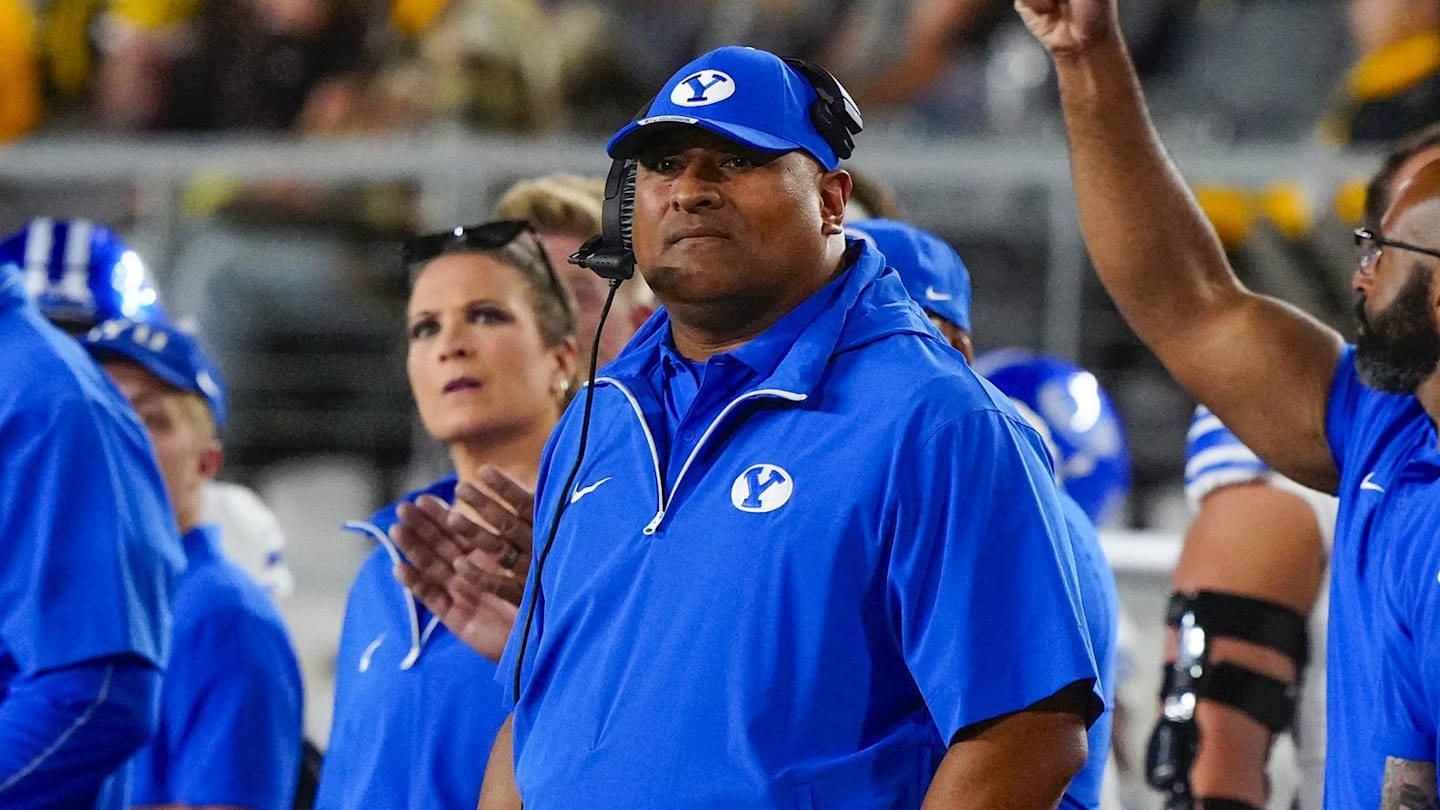
BYU’s stock plummeted this week.
After suffering a 17-13 loss to Kansas — their first loss of the season — the Cougars dropped from No. 6 to No. 14 in the College Football Playoff Rankings and into a tie with Colorado for first place in the Big 12.
And now they’re 3.5-point underdogs to Arizona State (8-2) in arguably the biggest game on the college football schedule this weekend. The winner will be in the pole position for a berth in the Big 12 championship game; the loser will be all but eliminated.
BYU coach Kalani Sitake knows anything can happen in the Big 12, and the Cougars are still very much alive for a berth in the College Football Playoff.
“You look at the conference, there’s a lot of parity … anyone has a shot,” Sitake said during his weekly press conference.
Here is a snapshot of what Sitake said ahead of BYU’s game with Arizona State:
Sitake on ASU Coach Kenny Dillingham
“Kenny Dillingham is a really good coach. I have a lot of respect for him and the way he coaches his team. You can tell he’s got a great connection with his players, and he’s a local kid so he’s from that area. He grew up an ASU fan and knows what that program can do. … I think he did it the right way bringing in a lot of local staff. … I know a lot of guys on his coaching staff. They’re really good coaches, good men.
“Looking at the talent that they have, it’s a difficult matchup. You have to be ready. We’re going on the road. We already know the time for that game and that it will be a little better weather than what we have here [in Provo]. Looking forward to the matchup. I think the goal is for us, like we said every week, stay humble, stay hungry and find ways to get better.”
Sitake on ASU Quarterback Sam Leavitt
“Really good player. He comes from a good family. He’s super athletic. He can run, he’s got an accurate arm. I think he’s got a great football IQ. He’s dangerous. He’s got a lot of football to play. I think he he saw some opportunities over there at ASU and you look at him, he’s thriving in it. He’s going to be a difficult matchup for us for sure. But man, it’s good to see good young men that you know are from amazing families get what they want. He’s doing some really cool things and he’s going to be doing really good things for a long time becauase I think he’s only a freshman right now. The sky’s the limit for him. Hopefully we just don’t see that great ‘sky limit’ performance this weekend.”
Sitake on BYU’s Recent Offensive Struggles
“There’s a fine line between it all … the key to execution is just eliminating the mistakes. There shouldn’t be any mistakes. Whether it’s alignment issues or technique issues or even running the wrong route or not doing the correct assignment. So all that should be cleaned up. But there’s also some room for improvement where you can actually install some stuff. You want to have a foundation of stuff that you’re good at and that you could lean on, but that’s the stuff that everybody knows is coming. So we have to have that and you have to have a little bit of install that gives you the favorable matchup, depending on who you’re going against.”
“That’s what we’re trying to get done. Obviously it’s worked quite a bit, and the offense they’re getting in the red zone. We’ve just got to score touchdowns. It’s hard to get in the red zone and only kick field goals. Even though you have a good kicker like Will Ferrin you’re going to need to score points and score touchdowns and finish the drives. It gives you a little bit more motivation and a little bit more ‘umph’ when you’re trying to get it done, so that’s what we’re focusing on.”
More Arizona State & Big 12 Analysis
-
Business1 week ago
Column: OpenAI just scored a huge victory in a copyright case … or did it?
-

 Health1 week ago
Health1 week agoBird flu leaves teen in critical condition after country's first reported case
-

 Business5 days ago
Business5 days agoColumn: Molly White's message for journalists going freelance — be ready for the pitfalls
-
World1 week ago
Sarah Palin, NY Times Have Explored Settlement, as Judge Sets Defamation Retrial
-

 Politics4 days ago
Politics4 days agoTrump taps FCC member Brendan Carr to lead agency: 'Warrior for Free Speech'
-

 Science2 days ago
Science2 days agoTrump nominates Dr. Oz to head Medicare and Medicaid and help take on 'illness industrial complex'
-
/cdn.vox-cdn.com/uploads/chorus_asset/file/25739950/247386_Elon_Musk_Open_AI_CVirginia.jpg)
/cdn.vox-cdn.com/uploads/chorus_asset/file/25739950/247386_Elon_Musk_Open_AI_CVirginia.jpg) Technology3 days ago
Technology3 days agoInside Elon Musk’s messy breakup with OpenAI
-

 Lifestyle4 days ago
Lifestyle4 days agoSome in the U.S. farm industry are alarmed by Trump's embrace of RFK Jr. and tariffs




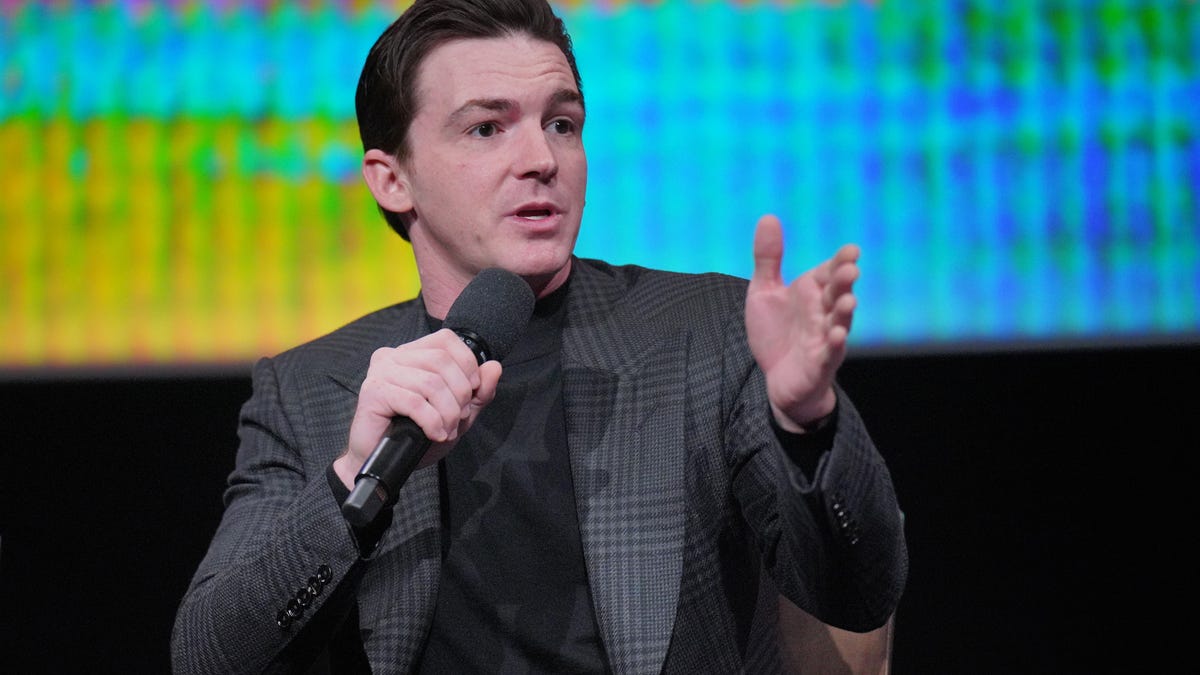


:quality(70)/cloudfront-us-east-1.images.arcpublishing.com/adn/VO3A23G6X5DG5BD2YOPOCUAV54.jpg)

